Leica Fellowship Visit To Leica - Wetzlar
07th February 2025
Fellowship Trip to Germany – May 2024
Gerald Stone
There have been many and varied changes at the Leitz Parc since the Fellowship last visited in 2018 and so it seemed about right that another trip should be undertaken. With this in mind, and with the additional incentive of photographing the overhead tram/railway in Wuppertal, I started doing the appropriate research. Finally the arrangements were made and we left the UK on 13th May.
We were staying for the first time for some, at the Ernst Leitz Hotel on the Leitz Parc campus and immediately adjacent to the factory.
After a really good breakfast, we all adjourned to the Leica Akademie where some of us were going to hand in the various items of kit that needed the attention of Leica’s Customer Care staff and to receive the equipment that we had requested to borrow. I had previously submitted a list of our service requirements and of the items we would like to borrow. Nick Kaufmann had done us proud with items that stretched from Hugh’s D-Lux 7 through Jay’s M11 and 35 Summicron (see photo 1) to what I had thought would be impossible – a 75mm F1.2 Noctilux.
A number of us, but especially Linda Steel, (see Photo 2) rather fancied a 1600mm F11 MR Telyt, a colossal lens weighing in at some 45 Kilos. This had been specially commissioned by some Middle-Eastern potentate to use for photographing hunting outings. Only three had been made, two for him and one for spares! Linda decided that it would be slightly too large for her suitcase to cope with so reluctantly, she had to leave it behind – much to Dennis’ credit card relief. The estimated cost would have been in the order of 3 million Euros.
The rest of the day was spent in and around the Leitz-Parc campus visiting the Leica Welt exhibition. This is a new, interactive facility with many exhibits that demonstrated Leica’s old and new achievements with great cleverness but was also easily understandable even for your humble scribe. There were other new attractions since we last visited. There is the Leica Museum, a much enlarged Store and the Leica Classic Store with lots of beautiful and enticing items on which to spend your money.
I went down into the City to play with my new acquisition. I don’t know whether any of you have seen or handled this £11,000 behemoth – I hadn’t and because of this I was unaware of the physical demands of using this awesome bit of kit. It is REALLY heavy and without a monopod I really struggled to hold it steady. There seemed to me that there was no point having such a light-master lens as this if you didn’t use it a full aperture at which the depth of field was about the thickness of a hair (not really but that’s how it felt!). The corollary to this was that I could use a fast shutter speed thus minimizing any camera shake which meant that most of my hand-held shots were acceptably sharp (see Photo 3). It was still a bit of a burden though and it finished up spending a great deal of our visit in my big camera bag back in the hotel. It was an interesting experience though but I don’t intend buying one (really?!).
I had, as on previous visits, asked Lars Netopil, who owns the Leica Store down in the city of Wetzlar and is an acknowledged expert in all matters Leica, to talk to us before dinner. We reconvened in the Leica Akademie on site to hear a most interesting talk about the road to the development of the M3, taking us from the latter stages of the screw-mount cameras through the various prototypes to the ultimate production M3. Fascinating stuff for me, because, as you all know, it’s the kit rather than the photos that really does it for me. Lars’ talks are always most informative as he has so much knowledge and experience and he’s never reluctant to share what he knows with anyone who wants to hear.
On the following day I had arranged for talks from Peter Karbe, now part retired from Leica, but is apparently always consulted on matters to do with new lenses as this was his domain. His lecture was rather technical to do with the theory, geographical history and practice of APO lens application.
Following on from Peter came Stefan Daniel, now the Vice-President Photo and Design, and effectively third in line at Leica. He talked to us about the background to the M Series of cameras and the transformation from analogue to digital functioning and now, of course, returning to analogue with the ‘new’ M6. There were lots of interesting facts and figures but he said that the camera he was most proud of was the M-240, as he was the project manager for the development and launch of what was essentially a brand new product, so many innovations were there on that camera.
After lunch we were given a tour of the factory facilities by Walter Vogler an old friend. This included a trip onto the factory roof for some panoramic photos of the campus site (see Photos 4&5) before returning to the Customer Care department to give back all the kit they had lent us. Some of our number were quite desolated at the loss of the items that they had fallen deeply in lust with. Some effort was expended by a member in trying to convince Nick Kaufmann that, as the equipment was now ‘second-hand’, then it could sold to her at an appropriate price. Nick, however, didn’t see it that way and our member was unable to satisfy her longing!
Anyway, with all our photographic bits and pieces handed back and the equipment that some of us had left to be repaired returned to us, the rest of the evening was our own. I think it’s worth saying at this point how generous all the staff at Leica were with their time – no repair incurred any cost – and with the loan of the various Leica bits and pieces. No security was required for any of the stuff we borrowed and it was all lent in the spirit of ensuring that we had the best of times while within the confines of the factory and indeed allowing us to go where we liked with their equipment. When I wrote to thank each of our speakers and to the Customer Care people, they encouraged our return and were complimentary about our knowledge and keenness about Leica. We are regarded as their ambassadors and, as such, the Company is keen that we maintain a relationship with head-office long into the future.
The next morning, we were at the railway station early for the start of the next part of the adventure – the visit to Wuppertal. This was to see the unique overhead railway. This was born out of necessity as when there was a requirement for a tram in the 1890s in the congested medieval city, there was found to be no space on the ground for one so the decision was taken to build it over the river that runs through the city. See Photo 6. This was achieved by use of a ‘A Frame’ and then to hang the railway off that frame. It succeeds brilliantly, see Photo 7.
Some memories of the day in Wuppertal… Jay, ‘I’m only a little old lady!’ persuading two girls to let her take their picture see Photo 8.
This was a most enjoyable adventure. We cemented the Fellowship’s relations with the Leica factory. We all enjoyed the activities and lectures that Leica laid on for us, we were fortunate in the equipment that we were loaned and the repairs to our own kit and we saw some splendid sights both on the campus and in Wuppertal. From the subsequent feedback, I understood that all members thoroughly enjoyed the days away from home and I have already received requests to organize a repeat event in 2025. I’ll start undertaking some basic research once I have a clear idea of numbers but it won’t be yet, I’m afraid, but I do love it when a plan comes together.
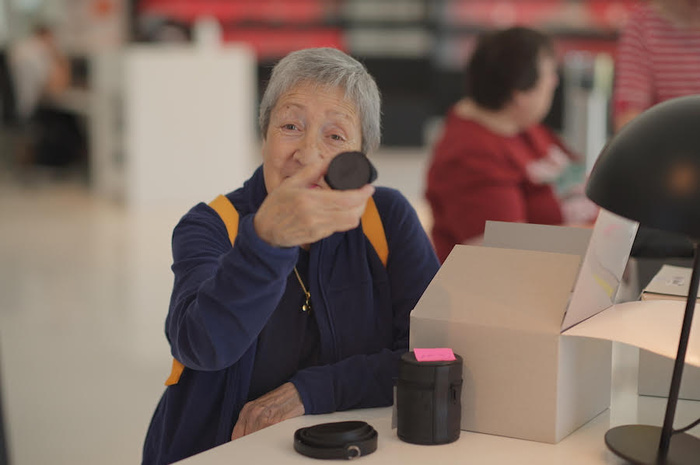
Visit To Leica 2024 - 01 - Jay with M11 & 35mm
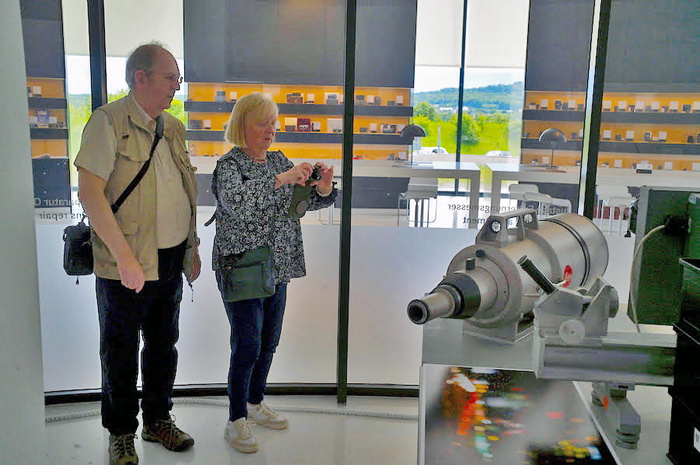
Visit To Leica 2024 - 2 - the Steels With 1600mm Telyt
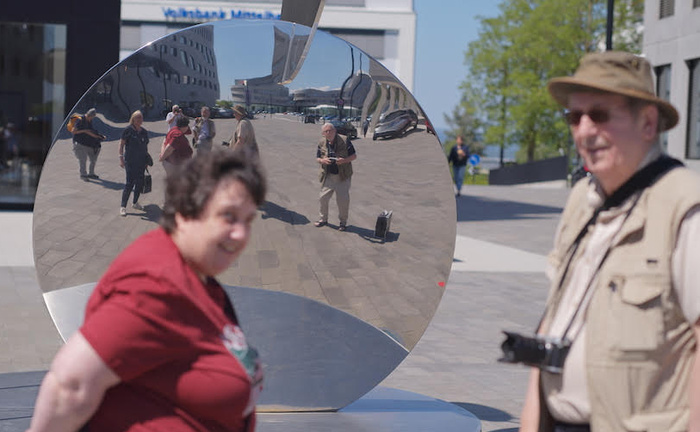
Visit To Leica 2024 - 3 - 75mm Noctilux
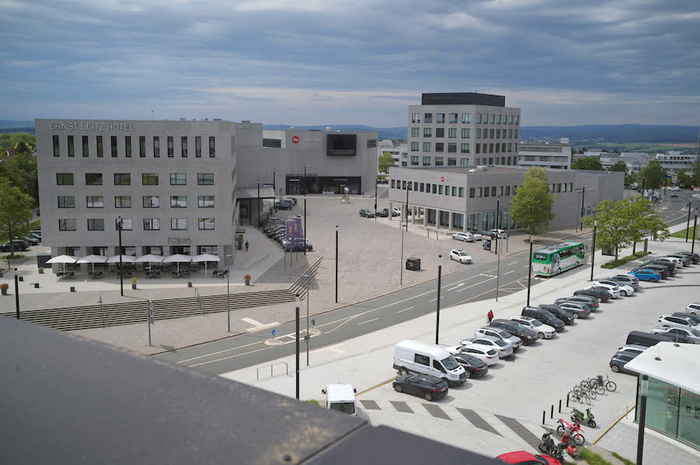
Visit To Leica 2024 - 4 - Leitz Parc - Wetzlar
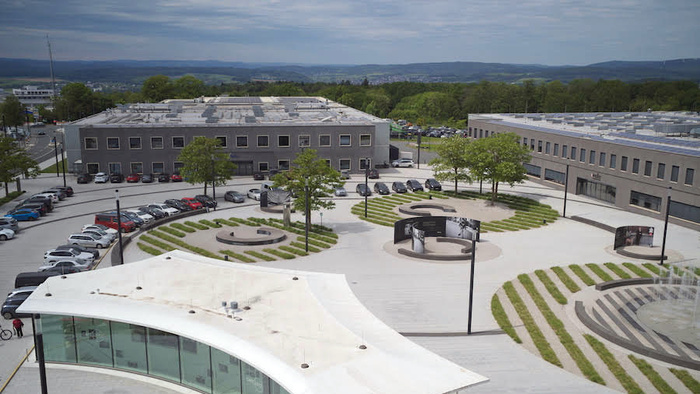
Visit To Leica 2024 - 5 - Leitz Parc - Wetzlar
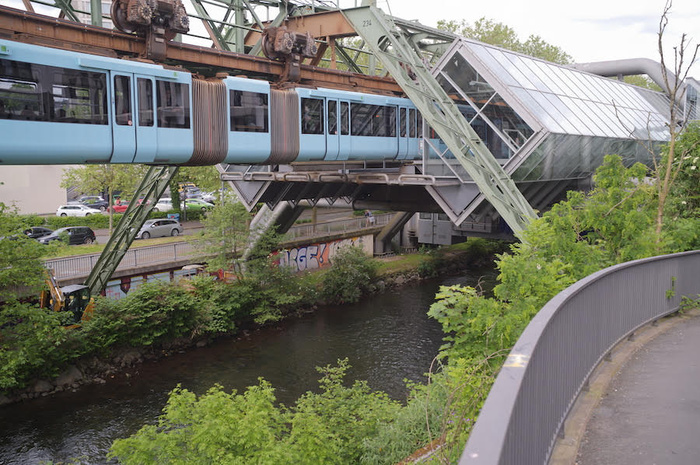
Visit To Leica 2024 - 6 - Wuppertal OHR
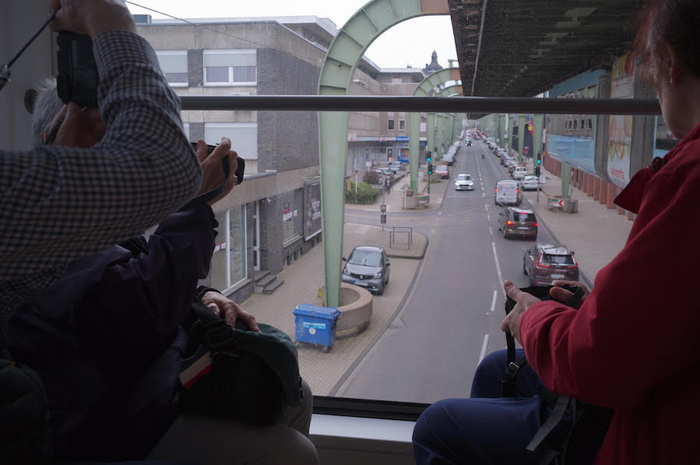
Visit To Leica 2024 - 7 - Wuppertal OHR
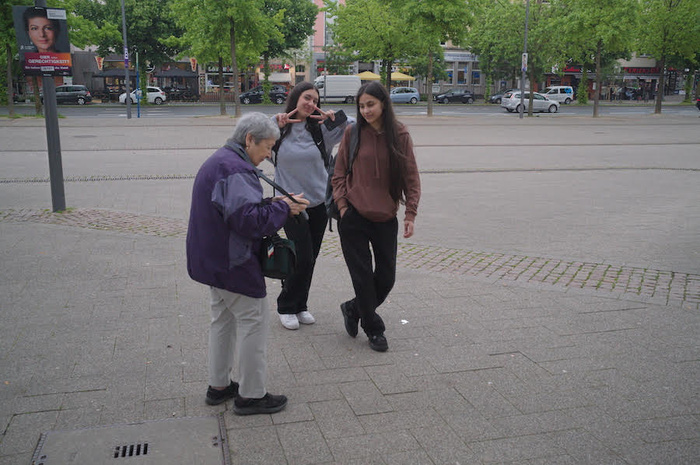
Visit To Leica 2024 - 8 - Street Capture by Jay
Gerald Stone
There have been many and varied changes at the Leitz Parc since the Fellowship last visited in 2018 and so it seemed about right that another trip should be undertaken. With this in mind, and with the additional incentive of photographing the overhead tram/railway in Wuppertal, I started doing the appropriate research. Finally the arrangements were made and we left the UK on 13th May.
We were staying for the first time for some, at the Ernst Leitz Hotel on the Leitz Parc campus and immediately adjacent to the factory.
After a really good breakfast, we all adjourned to the Leica Akademie where some of us were going to hand in the various items of kit that needed the attention of Leica’s Customer Care staff and to receive the equipment that we had requested to borrow. I had previously submitted a list of our service requirements and of the items we would like to borrow. Nick Kaufmann had done us proud with items that stretched from Hugh’s D-Lux 7 through Jay’s M11 and 35 Summicron (see photo 1) to what I had thought would be impossible – a 75mm F1.2 Noctilux.
A number of us, but especially Linda Steel, (see Photo 2) rather fancied a 1600mm F11 MR Telyt, a colossal lens weighing in at some 45 Kilos. This had been specially commissioned by some Middle-Eastern potentate to use for photographing hunting outings. Only three had been made, two for him and one for spares! Linda decided that it would be slightly too large for her suitcase to cope with so reluctantly, she had to leave it behind – much to Dennis’ credit card relief. The estimated cost would have been in the order of 3 million Euros.
The rest of the day was spent in and around the Leitz-Parc campus visiting the Leica Welt exhibition. This is a new, interactive facility with many exhibits that demonstrated Leica’s old and new achievements with great cleverness but was also easily understandable even for your humble scribe. There were other new attractions since we last visited. There is the Leica Museum, a much enlarged Store and the Leica Classic Store with lots of beautiful and enticing items on which to spend your money.
I went down into the City to play with my new acquisition. I don’t know whether any of you have seen or handled this £11,000 behemoth – I hadn’t and because of this I was unaware of the physical demands of using this awesome bit of kit. It is REALLY heavy and without a monopod I really struggled to hold it steady. There seemed to me that there was no point having such a light-master lens as this if you didn’t use it a full aperture at which the depth of field was about the thickness of a hair (not really but that’s how it felt!). The corollary to this was that I could use a fast shutter speed thus minimizing any camera shake which meant that most of my hand-held shots were acceptably sharp (see Photo 3). It was still a bit of a burden though and it finished up spending a great deal of our visit in my big camera bag back in the hotel. It was an interesting experience though but I don’t intend buying one (really?!).
I had, as on previous visits, asked Lars Netopil, who owns the Leica Store down in the city of Wetzlar and is an acknowledged expert in all matters Leica, to talk to us before dinner. We reconvened in the Leica Akademie on site to hear a most interesting talk about the road to the development of the M3, taking us from the latter stages of the screw-mount cameras through the various prototypes to the ultimate production M3. Fascinating stuff for me, because, as you all know, it’s the kit rather than the photos that really does it for me. Lars’ talks are always most informative as he has so much knowledge and experience and he’s never reluctant to share what he knows with anyone who wants to hear.
On the following day I had arranged for talks from Peter Karbe, now part retired from Leica, but is apparently always consulted on matters to do with new lenses as this was his domain. His lecture was rather technical to do with the theory, geographical history and practice of APO lens application.
Following on from Peter came Stefan Daniel, now the Vice-President Photo and Design, and effectively third in line at Leica. He talked to us about the background to the M Series of cameras and the transformation from analogue to digital functioning and now, of course, returning to analogue with the ‘new’ M6. There were lots of interesting facts and figures but he said that the camera he was most proud of was the M-240, as he was the project manager for the development and launch of what was essentially a brand new product, so many innovations were there on that camera.
After lunch we were given a tour of the factory facilities by Walter Vogler an old friend. This included a trip onto the factory roof for some panoramic photos of the campus site (see Photos 4&5) before returning to the Customer Care department to give back all the kit they had lent us. Some of our number were quite desolated at the loss of the items that they had fallen deeply in lust with. Some effort was expended by a member in trying to convince Nick Kaufmann that, as the equipment was now ‘second-hand’, then it could sold to her at an appropriate price. Nick, however, didn’t see it that way and our member was unable to satisfy her longing!
Anyway, with all our photographic bits and pieces handed back and the equipment that some of us had left to be repaired returned to us, the rest of the evening was our own. I think it’s worth saying at this point how generous all the staff at Leica were with their time – no repair incurred any cost – and with the loan of the various Leica bits and pieces. No security was required for any of the stuff we borrowed and it was all lent in the spirit of ensuring that we had the best of times while within the confines of the factory and indeed allowing us to go where we liked with their equipment. When I wrote to thank each of our speakers and to the Customer Care people, they encouraged our return and were complimentary about our knowledge and keenness about Leica. We are regarded as their ambassadors and, as such, the Company is keen that we maintain a relationship with head-office long into the future.
The next morning, we were at the railway station early for the start of the next part of the adventure – the visit to Wuppertal. This was to see the unique overhead railway. This was born out of necessity as when there was a requirement for a tram in the 1890s in the congested medieval city, there was found to be no space on the ground for one so the decision was taken to build it over the river that runs through the city. See Photo 6. This was achieved by use of a ‘A Frame’ and then to hang the railway off that frame. It succeeds brilliantly, see Photo 7.
Some memories of the day in Wuppertal… Jay, ‘I’m only a little old lady!’ persuading two girls to let her take their picture see Photo 8.
This was a most enjoyable adventure. We cemented the Fellowship’s relations with the Leica factory. We all enjoyed the activities and lectures that Leica laid on for us, we were fortunate in the equipment that we were loaned and the repairs to our own kit and we saw some splendid sights both on the campus and in Wuppertal. From the subsequent feedback, I understood that all members thoroughly enjoyed the days away from home and I have already received requests to organize a repeat event in 2025. I’ll start undertaking some basic research once I have a clear idea of numbers but it won’t be yet, I’m afraid, but I do love it when a plan comes together.

Visit To Leica 2024 - 01 - Jay with M11 & 35mm

Visit To Leica 2024 - 2 - the Steels With 1600mm Telyt

Visit To Leica 2024 - 3 - 75mm Noctilux

Visit To Leica 2024 - 4 - Leitz Parc - Wetzlar

Visit To Leica 2024 - 5 - Leitz Parc - Wetzlar

Visit To Leica 2024 - 6 - Wuppertal OHR

Visit To Leica 2024 - 7 - Wuppertal OHR

Visit To Leica 2024 - 8 - Street Capture by Jay
Comments
 By Pam: You obviously had a great time everyone
Pam
By Pam: You obviously had a great time everyone
Pam By Cled lewis: Thank you Gerald for such an enjoyable article.More of a story which made many of us realise what we had missed.
It is thanks to you and your relationship with the people at Wetzlar which resulted in such a successful and enjoyable visit
By Cled lewis: Thank you Gerald for such an enjoyable article.More of a story which made many of us realise what we had missed.
It is thanks to you and your relationship with the people at Wetzlar which resulted in such a successful and enjoyable visit By Dennis Steel: A great article and trip Gerald- Well done.
The service and lectures we received from Leica staff was second to none, they really made us welcome.
We cannot wait for the next visit to the park, Gerald
By Dennis Steel: A great article and trip Gerald- Well done.
The service and lectures we received from Leica staff was second to none, they really made us welcome.
We cannot wait for the next visit to the park, Gerald By David Askham: Thank you Gerald for your amusing report of the LF visit to Leica Germany last year. Do I sense a degree of weight consciousness creeping into your judgement of future kit to buy?
By David Askham: Thank you Gerald for your amusing report of the LF visit to Leica Germany last year. Do I sense a degree of weight consciousness creeping into your judgement of future kit to buy? By Wendy McKay: Thank you for organising our trip to Leica Gerald. Stephen and I really enjoyed it. The talks were very informative & interesting. The Leica staff made us feel very welcome. Your pictures brought back some good memories. We look forward to another visit in the future.
By Wendy McKay: Thank you for organising our trip to Leica Gerald. Stephen and I really enjoyed it. The talks were very informative & interesting. The Leica staff made us feel very welcome. Your pictures brought back some good memories. We look forward to another visit in the future.